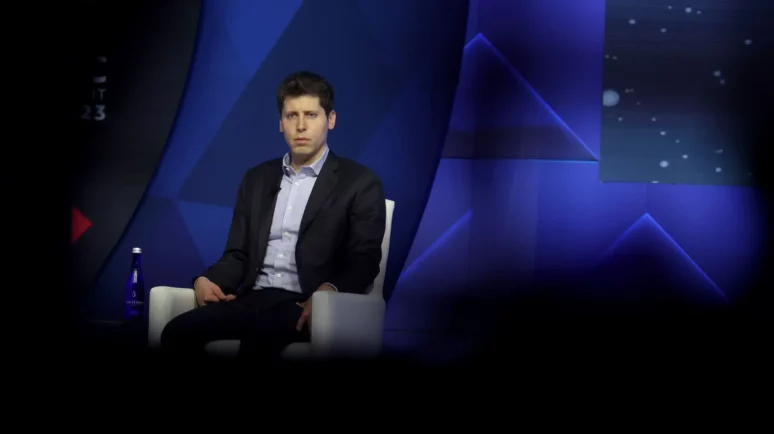OpenAI Burning Through Investor’s Cash – IPO Enough To Quell Concerns?

OpenAI faces financial strain despite widespread adoption of its AI products, struggling to turn its popularity into profit. l Source: Sven Hoppe/picture alliance via Getty Images
Key Takeaways
- OpenAI requires high operational costs, particularly for running AI services like ChatGPT.
- Increased demand for OpenAI’s products necessitates constant improvement, requiring expensive upgrades to computing power and infrastructure.
- While recent AI public listings showed promise, OpenAI might not meet traditional IPO requirements.
OpenAI, the company behind the popular artificial intelligence (AI) tools, is facing some financial issues. It is burning cash at an alarming rate, most of which relates to its main product, ChatGPT.
Despite efforts to monetize its technology, profitability remains elusive, leaving OpenAI with a tough decision: secure additional funding or go public. However, going public on Wall Street is no easy feat for Sam Altman’s company.
OpenAI Is A Cash Burning Machine
The Sam Altman-led company has a high cash burn rate. In fact, sustaining its main AI service, ChatGPT, costs nearly $700,000 daily. Despite Altman’s efforts to monetize GPT3.5 and GPT-4, the company remains far from profitability, which appears to be an elusive goal.
A significant factor contributing to this downward trend is API cannibalization. This means that while many companies restrict their employees from using ChatGPT directly for work, they permit the use of the API to integrate the large language models (LLM) into various workflows.
Without securing additional funding soon, OpenAI might file for bankruptcy by the end of 2024 to procure more Nvidia GPUs expected in the second quarter of the year and commence model training, according to one report . This may be a pessimistic prediction, but the company continues to face mounting challenges: increasing competition, escalating losses, dwindling user numbers, mounting lawsuits, and declining quality.
However, despite not being profitable, it is unlikely we will see OpenAI facing bankruptcy anytime soon. AI expert John Munsell believes “the future of OpenAI may be debatable, but the smart money’s on it being the dominant player once its ecosystem fully takes off.”
“Considering the financial landscape, potential for going public, and market dynamics, the prospect of OpenAI going bankrupt at the end of 2024 seems highly unlikely. With commitments from Microsoft for at least another $7 billion and the ability to leverage its unique position in the AI industry, OpenAI isn’t going anywhere anytime soon,” Munsell added.
ChatGPT Creator Has Reported No Profit Yet
OpenAI’s losses have ballooned to $540 million since its venture into developing ChatGPT and similar products. While these innovations are gaining widespread adoption worldwide, they’re struggling to translate this popularity into profitability.
It’s a perplexing situation. Expanding OpenAI’s offerings through APIs and products has led to increased adoption by individuals and businesses. One might assume this surge in usage would translate into profits. However, there’s a catch. The company continually strives to develop superior offerings with the growing demand for OpenAI ‘s generative AI products among enterprises. This, in turn, necessitates hefty investments in computing power and infrastructure – a delicate balancing act.
Despite revenues showing signs of improvement, OpenAI is caught in a cycle where the pace of spending hundreds of millions of dollars to enhance products and infrastructure matches or even outpaces revenue growth.
Acknowledging this drain on capital, Altman has expressed a desire to raise up to $100 billion in the coming years. While this substantial sum might seem aimed at offsetting ongoing losses, Altman insists it’s primarily to realize the company’s long-standing dream of achieving artificial general intelligence. Nevertheless, many experts cast doubt on the feasibility of this goal, especially with auto-regressive LLMs.
IPO May Be A Solution
While recent IPOs, such as those of Oddity Tech and Cava , have demonstrated a robust market, experts caution that predicting which AI companies will debut on the public market first remains largely speculative.
Jay R. Ritter , Cordell Professor of Finance at the University of Florida, suggested that certain metrics from previous IPOs can provide insight into when a tech company might be poised to go public. Typically, tech firms need to amass around $100 million in revenue and have at least 10 years of operational history before considering an IPO.
However, given the fervor surrounding AI, Ritter said that companies in this space might opt for an IPO at an earlier stage than usual. This indicates that profitable tech companies with revenues exceeding $100 million enjoyed a three-year buy-and-hold return of 65%, outperforming non-tech counterparts at 37%.
David Hornik, founder of Lobby Capital, believes that while AI will likely play a role in most future tech IPOs, pure-play AI companies may not yet possess the economic fundamentals necessary for a public offering. For him, we’re still in the early stages of companies whose core innovation hinges on AI.
Hornik emphasized LLMs as a pivotal AI technology that may penetrate diverse applications. Startups in this field may pursue a “vertically focused” strategy, targeting specific niches or utilizing proprietary data for LLM training. Rather than opting for public offerings, some AI firms might be acquired by larger companies seeking innovative products.
Anyway, Sam Altman denied any valuation of a possible IPO in late 2023: “I don’t want to be sued by public market, Wall Street, etc, so no, not that interested.” If not going public, OpenAI needs money to boost its operativity. In October 2023, the company was in talks to sell existing employees’ shares at an $86 billion valuation.


